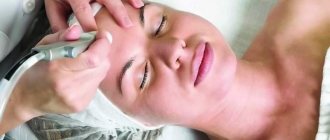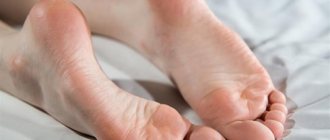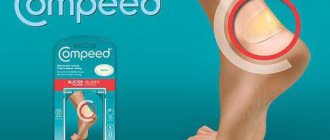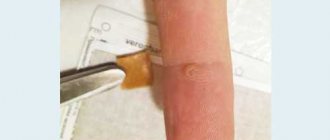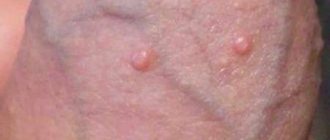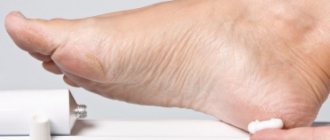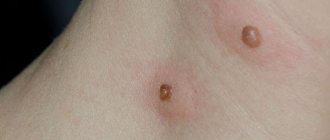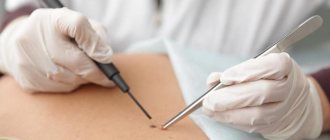Getting rid of old calluses on your own is not easy: you need to carry out several procedures using keratolytic agents, after steaming the keratinized areas. The result often leaves much to be desired, especially if the callus is core. The laser removal method allows you to quickly, painlessly and guaranteed eliminate any callus.I.
Photo 1. Laser removal of calluses is one of the most effective and safe methods. Source: Flickr (lifoot care)
Indications for the procedure
When choosing treatment methods, it is important to determine the exact cause of the appearance and type of formations. For example, doctors do not recommend laser removal of dead skin on the palms of athletes or workers whose hands are subject to frequent friction. The removed callus will reappear in its original place after some time.
You should not use a laser for “dropsy,” a wet callus that can be treated with more conservative methods.
Callous formations on the hands appear during physical work, with constant friction of the skin against musical instruments or sports equipment. Calluses and corns on the feet are formed due to poor hygiene, wearing uncomfortable shoes, excess weight, deformed feet, excessive sweating, as well as among professional dancers and athletes.
Calluses are classified depending on clinical manifestations:
- Soft watery. They arose recently, as a result of mechanical friction and damage to a small area of the epidermis. Interstitial fluid fills the space between the layers of the dermis, and a bubble appears. This type does not require special treatment.
- The formation of dry calluses is based on the formation of isolated hyperkeratosis, when constant pressure on skin cells causes their increased reproduction, and the process of desquamation (rejection) of dead layers of the epidermis is disrupted. The stratum corneum becomes coarser, its structure changes. Externally, a dry callus looks like an area of thickened skin. Favorite localization - fingers and palms of the hands, feet.
- Corns are a type of dry callus, different from the usual one, larger in size. Most often they are located on the sole of the foot and on the pads of the toes.
- Core calluses are hard, rounded growths with a central core extending into the deep layers of the dermis. When the root grows to the nerve endings, the patient experiences severe pain not only when walking, but also at rest.
Prices for laser callus removal procedures vary from 700 to 4000 rubles.
The cost of the service depends on the region where the medical institution is located, the status of the clinic, the class of equipment used, the professional training of the doctor, and the complexity of the operation.
Indications for laser destruction:
- The callus is old; repeated unsuccessful attempts have been made to remove it using conservative methods.
- The appearance of discomfort in the area where the callus is located: itching, burning, pain.
- When growths on the legs create an obstacle to free movement.
- A long-term dry callus with a core that has grown deep into the soft tissues, causing severe pain when pressed.
- Massive formations on the hands that impair finger motor skills.
- If the growth is covered with cracks from which blood or lymph oozes.
- When the color of the formation and surrounding tissues changes.
- Calluses located on the toes, with extensive hyperkeratosis.
- With a significant aesthetic defect of the legs, which does not allow a woman to wear open shoes.
What are calluses and why do they appear?
A callus is a keratinized area of skin that is formed from dead epithelial cells. This type of callus is called dry callus. They also secrete a wet callus, which is a bladder filled with lymph. Typically, calluses appear on the hands and feet. The formation of surface layer compactions occurs for several reasons:
- prolonged mechanical damage to a certain area;
- incorrectly selected shoes;
- insufficient or irregular hygiene;
- some pathologies of the musculoskeletal system;
- fungal infection.
Most often, calluses disappear on their own, but there are cases when they need to be removed.
Benefits of laser callus removal
Among the advantages of using a laser for this purpose are the following:
- There is no danger of wound infection, since the laser beam has bactericidal properties.
- The doctor has the ability to adjust the parameters (depth and width) of radiation exposure to the affected area, so healthy tissues are not injured.
- One session is enough to remove the callus; relapses are rare.
- The procedure is well tolerated by patients and is performed under local anesthesia.
- The operation is bloodless, since the vessels that fall into the area of the beam are reliably coagulated.
- Rapid healing of even deep wounds formed after removal of core calluses.
- The procedure is performed on an outpatient basis and does not require hospitalization or a long period of rehabilitation.
Treatment of callus with medications
It is immediately worth noting that drug treatment of calluses has the least therapeutic effectiveness.
This phenomenon is associated with the inability of drugs to penetrate deep into tissues, eliminating the root of the formation.
The products used for core calluses often contain keratolytic components and can be effective at the beginning of callus development.
As a rule, products based on salicylic acid are used.
Salicylic acid is a keratoplastic and keratolytic agent.
In addition, it has an antibacterial and antifungal effect.
Salicylic acid works by softening keratin, a natural protein that is part of the skin's structure and produced by the body.
The drug has a softening effect on the stratum corneum of the dermis, which facilitates its removal.
Salicylic acid is often used in combination with other substances.
Allows for a higher therapeutic effect.
When using salicylic acid preparations, the simultaneous use of the following drugs is not recommended:
- Alcohol-containing medications.
- Any other local medications that contain dibenzoyl peroxide or retinoid.
- Soapy substances that have a drying effect.
- Cosmetics that have an exfoliating effect.
Contraindications
Categories of patients for whom destruction of callosal formations using a laser is contraindicated:
- Women during pregnancy and lactation.
- Children under 15 years of age.
- Patients suffering from an uncompensated form of diabetes.
- People with acute diseases and exacerbations of chronic ones.
- With a tendency to form hypertrophic keloid scars.
- People with inappropriate behavior and a history of seizures (epilepsy, psychosis).
- HIV-infected.
- Patients with bleeding disorders or chronically taking anticoagulants.
- For skin diseases and damage to the skin in the area of intended laser action.
- If a malignant process is suspected.
Identifying contraindications to laser callus removal reduces the risk of complications.
Features of the procedure
The technical capabilities of laser destruction allow the use of different modes of action on tissue: coagulation, excision of pathologically altered areas, tissue evaporation.
The procedure is performed in a special room under sterile conditions. The area around the callus is injected with a local anesthetic. The surgical field is thoroughly disinfected with an antiseptic. The doctor then points a laser scalpel at the growth that needs to be removed. Laser radiation, entering the tissues, causes their rapid heating, and thermal destruction of the pathological focus occurs.
When removing corns, hard layers of keratinized tissue are cut out to a healthy layer.
When eliminating the rod formation, the root is evaporated along its entire length. Since the laser beam is transparent and the surgical field is dry (no bleeding), the doctor visually controls whether the rod is completely removed.
The procedure lasts 10-15 minutes, after which the wound is treated with an antiseptic and a sterile bandage is applied to it. The doctor gives detailed recommendations for caring for the postoperative wound, then the patient is sent home.
Complications
Negative consequences of the operation are extremely rare and are most often provoked by the patients themselves, who do not comply with the rules of conduct during the rehabilitation period, or by medical errors.
The following complications are identified:
- Sluggish wound healing, when, instead of epithelial cells, the wound is filled with fibrocytes, the proliferation of which leads to the formation of a scar.
- When healthy tissue is injured by a laser beam, a burn is formed, manifested by swelling, inflammation, and pain in the damaged area.
- Attachment of a secondary bacterial infection.
- Foci of hyperpigmented skin appear at the site of healing.
- Re-formation of calluses, instead of removed ones, or in neighboring areas . This happens if the patient does not eliminate the causes of callous growths.
Medical diagnosis of callus
Core-type calluses are fairly easy to diagnose.
After an in-person consultation, a dermatologist can provide a conclusion and diagnosis about the type of skin growth.
The only difficulty may be differentiating an ingrown callus from Verruca plantaris (plantar wart).
Because they have the same location and appearance.
You can distinguish a callus from a wart by the following features:
- An ingrown callus is not accompanied by bleeding even with strong pressure on it.
- A wart, unlike a callus, is not a single formation. Typically, upon examination, several warts that resemble cauliflower can be identified.
- The callus in its central zone has a small depression, which can be seen upon detailed examination. In the case of a wart, the HPV formation consists of thin fibers; petechiae (black dots) are observed on top, which bleed when injured.
- If a wart is present, pain occurs when the lesion itself is palpated; there is no pain when walking. In the case of calluses, pain is observed with any mechanical movement.
To confirm the diagnosis and determine the cause of the disease, the dermatologist prescribes a blood test for diabetes mellitus.
Also an analysis to determine the human papillomavirus, to exclude HPV.
Additionally, the doctor can redirect the patient to other specialized specialists.
See a podiatrist (a doctor who treats foot pathologies), a rheumatologist or an orthopedist.
An important point is to exclude Morton's neuroma.
Morton's neuroma is a benign or non-cancerous growth of fibrous tissue.
Develops in the area of the tibial nerve, most often between the third and fourth fingers.
The pathology is accompanied by thickening of the plantar nerve, pain when walking, and a feeling of numbness in the fingers.
The disease is also known as Morton's metatarsalgia, plantar neuroma, and intermetatasal neuroma.
Rehabilitation
The postoperative wound heals within 2-3 weeks, which depends on the regenerative ability of the skin, the size of the damaged epidermis and the patient’s compliance with the doctor’s instructions.
- The top of the wound is covered with a crust, which protects the multiplying epithelial cells from infection, so you cannot touch or tear off the protective film. Every day it is necessary to treat the damaged area with an antiseptic and cover it with a bandage.
- Visiting swimming pools, ponds, baths, saunas, and solariums is not recommended.
- If the callus is located on the leg, you should limit the mechanical pressure on the injured area and choose soft, comfortable shoes. Women should avoid wearing high-heeled shoes.
- Cancel training and sports activities until the wound has healed.
- If the postoperative injury is localized on the hand, use gloves when performing household work.
The appearance of pain, hyperemia, swelling, or discharge from the wound is a reason to immediately consult your doctor.
The laser callus removal method is one of the modern hardware methods of ridding the patient of unpleasant growths on the skin and guarantees an almost 100% absence of complications or relapses.
Causes
- By choosing tight shoes, inexpensive materials that contribute to excessive moisture in the feet, you can get complications such as callus. Also, women may develop such a callus due to frequent wearing of high-heeled shoes.
- Often this problem occurs when a grain of sand, hair or splinter gets under the skin. If the callus is not treated, it will penetrate the soft tissues with a cone-shaped process, affecting the nerve endings.
- Calluses may appear on the palms due to the type of activity (frequent work with tools, playing certain sports: hanging on the horizontal bar, rings, parallel bars, etc.).
- Fungal infection.
